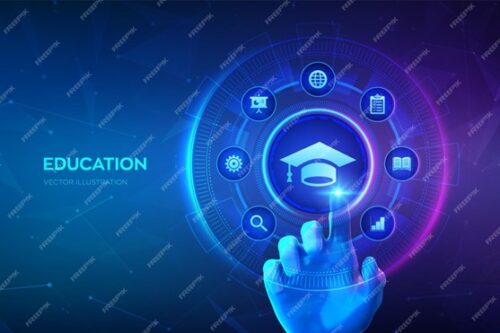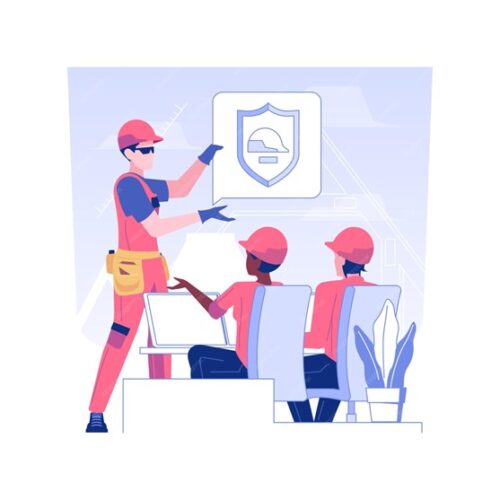As we offer various platforms on harassment prevention training in a workplace, in this article we will focus on the benefits of flexible learning. Learning is not just a necessity, it’s a continuous process that never ends. With the advent of technology, eLearning has become a popular alternative to traditional classroom learning. eLearning refers to any form of learning that is delivered electronically, through the internet or other digital channels. This form of learning has numerous benefits over traditional learning, which has made it increasingly popular. This article will explore the power of flexibility that eLearning provides and how it is revolutionising the way we learn.
Introduction to eLearning
eLearning has been around for a while, but it is only in recent years that it has gained immense popularity. With the rise of the internet and the increasing availability of technology, eLearning has become a viable option for many people. eLearning has become an essential part of many organisations, and it has proven to be an effective way to deliver training to employees.
The most common way to learn Digital is to improve classroom learning. Mixed learning helps students explore technologies and apply different learning tools or strategies, for example, PowerPoint, visual classrooms, video lessons, etc. Mixed learning enhances the quality of education and knowledge integration while making learning more effective and more productive.
The nature of learning is changing, 21st century technological advances and the widespread integration of such technologies into our society, combined with access to the Internet has completely revolutionised in the learning process.
Rapidly changing environments should be a mark to show that learning methods need to emerge in order to keep up with the times and incorporate Blended technology into the learning process.
Blended learning is a natural improvement in the growing reach of eLearning, online resources, and the on-going need for a segment of people in learning. The Blended learning approach ensures that the learner is busy and practicing his / her individual reading skills. This approach also helps to cater for the needs of each student, most students have different learning styles and a mixed approach is more likely to address those needs than the standard classroom learning experience.
The benefits of eLearning
eLearning has numerous benefits over traditional classroom learning. One of the main advantages is flexibility. eLearning allows learners to take courses at their own pace, on their own time, and from anywhere. This means that learners can fit their learning around their work and personal schedules. Another benefit of eLearning is cost-effectiveness. eLearning is usually less expensive than traditional classroom learning, as there are no travel or accommodation costs. Additionally, eLearning can be delivered to a large number of learners at once, which can save organisations a lot of money.
eLearning statistics
The popularity of eLearning is growing rapidly, and this can be seen in the statistics. According to a report by eLearning Industry, the global eLearning market is expected to reach $325 billion by 2025. Additionally, a survey by the Brandon Hall Group found that eLearning has the potential to increase retention rates by up to 60%.
The importance of harassment prevention training in the workplace
Harassment in the workplace is a serious issue that can have severe consequences for both the victim and the organisation. It is, therefore, essential that organisations provide their employees with harassment prevention training. Harassment prevention training is designed to educate employees about what constitutes harassment, how to recognise it, and how to report it.
The challenges of traditional workplace training
Traditional workplace training has numerous challenges. One of the main issues is that it can be difficult to deliver training to a large number of employees at once. This can lead to scheduling conflicts, which can result in some employees not receiving the training they need. Additionally, traditional training can be expensive, as it often requires travel and accommodation costs.
How eLearning is revolutionising the way we learn
eLearning is revolutionising the way we learn by providing a flexible alternative to traditional classroom learning. eLearning allows learners to take courses at their own pace, on their own time, and from anywhere. This means that learners can fit their learning around their work and personal schedules. Additionally, eLearning is cost-effective and can be delivered to a large number of learners at once.
Blended Learning Models
Blended learning models combine traditional classroom learning with eLearning. Blended learning models are becoming increasingly popular, as they allow organisations to take advantage of the benefits of both traditional and eLearning. Blended learning models can be customised to meet the needs of individual learners, which can improve the learning experience.
- Online Learning: Learning takes place through an online platform, with face-to-face meetings.
- Rotational reading: The student navigates between self-paced online reading and face-to-face instructions. Schedules adjusted but flexible.
- Flex Learning: Most instruction is brought online; teachers provide as much support as possible in small group settings.
- Personalised Mixing: The teacher designs face-to-face with anywhere, anytime learning options that affect the actual classroom and visual spaces. Learning is constant and time is flexible.
- Self-Blend Learning: Students take online courses to supplement their cultural schools and face-to-face learning.
- Face-to-face learning: The trainer primarily provides face-to-face instruction, along with technology in the classroom or in the computer lab.
Blended learning is becoming increasingly popular because it breaks down common learning walls, those that do not work for all students and now with access to modern technology and resources we can improve the learning experience of each student. Blended reading provides flexible sessions that can be done individually, giving them the ability to read at their own pace.
Benefits of Blended Training
Cost. Training is less expensive to deliver, more affordable, and more time-saving.
Flexibility. Blended reading provides flexibility in terms of availability. In other words, mixed reading enables the student to access resources anywhere at any time while enjoying the benefits of face-to-face support and instruction.
Access. Access to international resources that meet the level of knowledge and interest of the learner.
Increase student interest. when technology is Blended into school subjects, students are more likely to become interested in it, focus on it, and enjoy the subjects they are learning.
Keep students focused for a long time. Using computers to view information and data saves us a lot of time, including access to resources such as the internet to do research. This interaction with the resources keeps students focused for a long time and then they will have books or paper resources, this interaction also helps to improve learning through assessment and research.
Independence. Students begin to work independently and responsibly, tracking their individual success, which helps to develop the ability to access resources or get the help they need, to speak for themselves to achieve their goals.
Improve student identity. Blended learning promotes a sense of ‘student identity over learning’ which can be a great force for further learning, it is this sense of commitment that aids the sense of identity.
Allows students to learn at their own pace. Due to the flexibility of mixed learning and the ability to access online resources it allows students to learn at their own pace, which means the teacher can help speed up the learning process.
The power of flexible learning
Flexible learning is one of the main advantages of eLearning. Flexible learning allows learners to take courses at their own pace, on their own time, and from anywhere. This means that learners can fit their learning around their work and personal schedules. Flexible learning can also improve retention rates, as learners are more likely to engage with the material when they have control over their learning.
eLearning and harassment prevention training
eLearning is an effective way to deliver harassment prevention training to employees. eLearning allows employees to take the training at their own pace, which can improve retention rates. Additionally, eLearning can be tailored to meet the specific needs of individual organisations, which can improve the effectiveness of the training.
How to create effective eLearning courses for prevention training
Creating effective eLearning courses for prevention training requires careful planning and design. The courses should be engaging and interactive, with clear learning objectives and assessments. Additionally, the courses should be tailored to the needs of the learners and the organisation.
The role of technology in eLearning
Technology plays a crucial role in eLearning. Technology is used to deliver the courses, track progress, and assess learning outcomes. Additionally, technology is used to create interactive and engaging courses that can improve retention rates.
eLearning platforms and tools
There are numerous eLearning platforms and tools available, each with its own set of features and benefits. Some popular eLearning platforms include Moodle, Blackboard, and Canvas. Additionally, there are various tools available for creating eLearning courses, such as Articulate Storyline and Adobe Captivate.
Future of eLearning
The future of eLearning looks bright, with the market expected to continue to grow rapidly. Additionally, the development of new technologies, such as virtual and augmented reality, will provide new opportunities for eLearning. The future of eLearning will also be shaped by the changing needs of learners and organisations.
Conclusion
eLearning is revolutionising the way we learn by providing a flexible and cost-effective alternative to traditional classroom learning. eLearning allows learners to take courses at their own pace, on their own time, and from anywhere. Additionally, eLearning is an effective way to deliver harassment prevention training to employees. The future of eLearning looks bright, and it will continue to be an essential part of many organisations.
If your organisation is looking to implement eLearning, consider partnering with WHS and Training Compliance Solutions, we are professional eLearning provider to create effective and engaging courses for your employees.
———————————————————–
Elearning WHS and Training Compliance Solutions are:
- Online Work Health and Safety Committee
- Online Work Health and Safety for Managers and Supervisors
- Online Workplace Bullying and Harassment Prevention Training for Employees
- Online Workplace Bullying and Harassment Prevention Training for Managers and Supervisors
- Online Sexual Harassment Prevention in a Workplace Training
Our elearning programs are carefully designed including recent scenarios adopted from real court cases. In order to increase the learners interest in elearning, we have included interactive quizzes, videos.
Contact us for more information on elearning (flexible learning) programs in Australia. We do have group discounts, and group registrations.
Onsite training across Australia
Some of our onsite training programs are:
- Work Health and Safety Committee
- Work Health and Safety for Managers and Supervisors
- Workplace Bullying and Harassment Prevention Training for Employees
- Workplace Bullying and Harassment Prevention Training for Managers and Supervisors
- Sexual Harassment Prevention in a Workplace Training
- Workplace Resilience
- Mental Health First Aid, Youth Mental Health First Aid.
And many more.
Contact us for more information on onsite training across Australia. We can customise onsite training for your companies’ policies and procedures.












